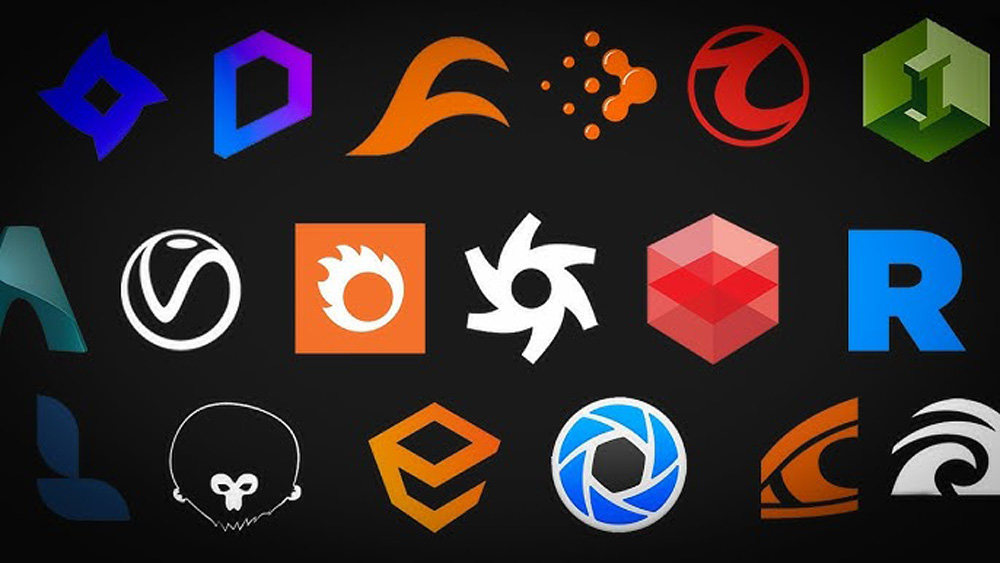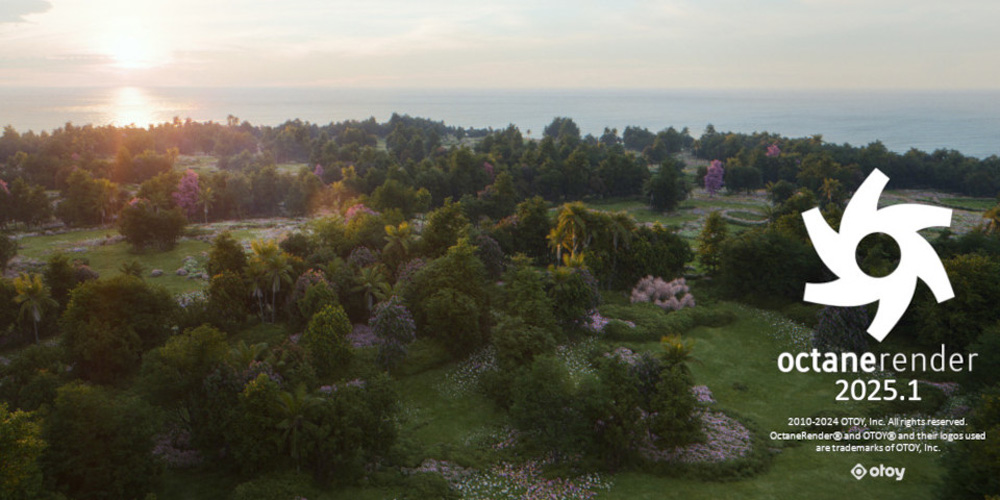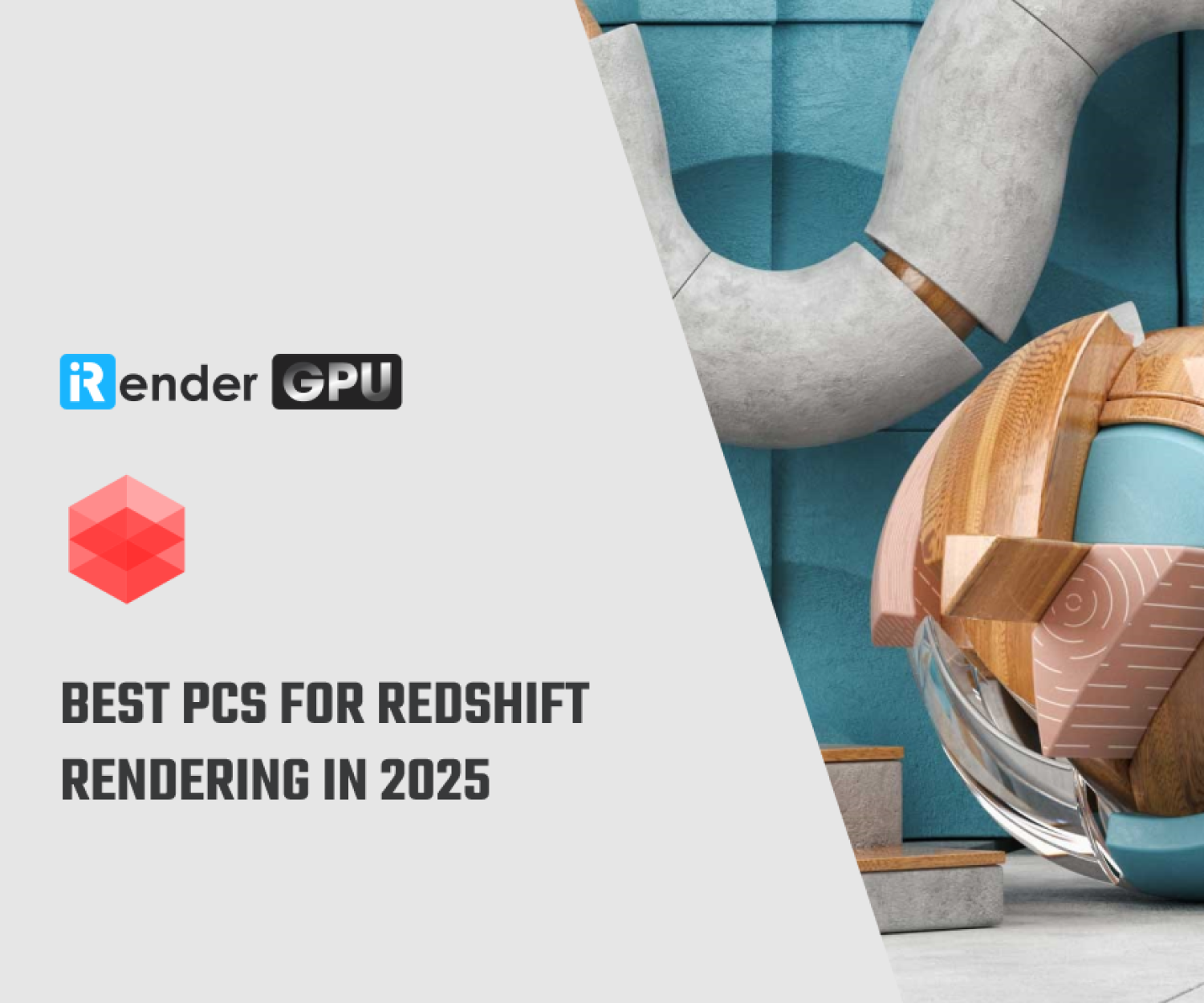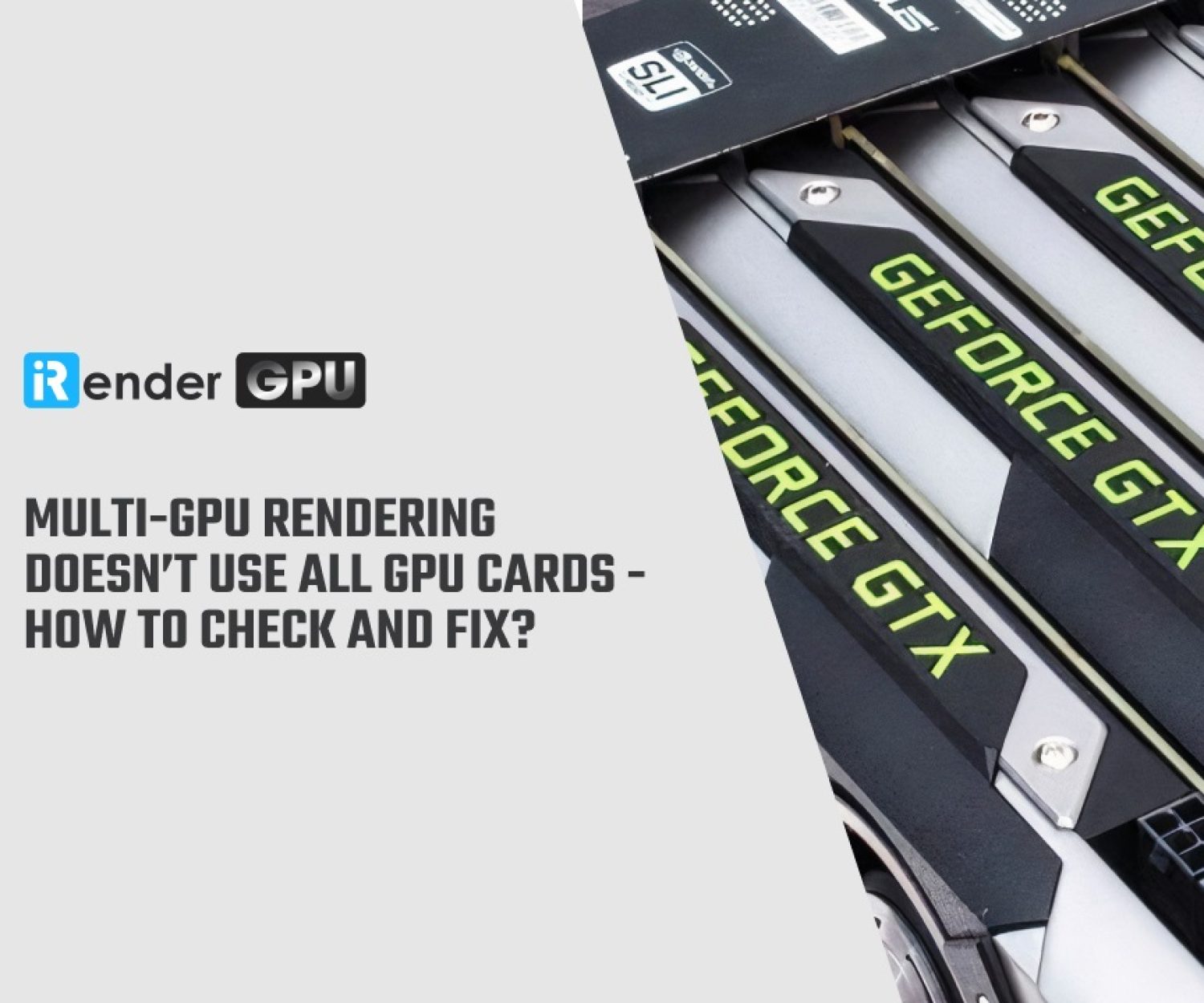The Top External Rendering Engine of 2025
As technology continues to evolve and the demand for high-quality visual content rises, the role of external rendering engines in the design and animation industries becomes increasingly significant. Rendering engines are essential tools that transform 3D models and scenes into photorealistic images and animations, greatly enhancing the visual experience. As we step into 2025, numerous rendering engines vie for the title of the best external renderer, each offering unique features, capabilities, and workflows tailored to accommodate diverse artistic visions and technical requirements.
In this article, we will explore the Top External Rendering Engine of 2025.
What is a rendering engine?
Image Source: Artin Azarnejad
A rendering engine is a software tool that converts 3D models and scenes into 2D images or animations, effectively bringing digital content to life. They work seamlessly with applications such as Maya, 3ds Max, Cinema 4D, and Blender, allowing users to configure materials, lighting, cameras, and output settings before rendering the scene. Additionally, they achieve these tasks with significantly greater speed and improved physical accuracy.
Rendering engines play a crucial role in the digital content creation process, enabling artists and designers to visualize their ideas and deliver compelling visual experiences. With a variety of engines available, each offering unique features and capabilities, the choice of a rendering engine can significantly impact the creative process and the final product’s quality.
What are rendering engines good at?
Rendering engines excel at transforming 3D models and scenes into stunning, high-quality images and animations, making them invaluable tools in various fields such as film, video game development, architecture, and product design. One of their primary strengths lies in their ability to simulate complex visual effects, including accurate lighting, shadows, reflections, and refractions.
Another area where rendering engines shine is their versatility and integration capabilities. Many rendering engines are compatible with popular 3D modeling software, allowing artists and designers to incorporate them into their existing workflows easily.
Rendering engines are also exceptional at handling diverse types of content, from realistic architectural visualizations to stylized animations. With advancements in real-time rendering technology, they can provide immediate feedback during the design process, allowing creators to visualize changes instantly without lengthy waiting times. This capability significantly boosts productivity, particularly in fields where quick iterations are essential, such as game development and interactive media.
The Top External Rendering Engine of 2025
Autodesk Arnold
Image Source: Autodesk
Autodesk Arnold is a high-quality rendering software widely used in the fields of visual effects, animation, and 3D graphics. It utilizes a physically-based rendering approach, allowing artists to achieve realistic results by simulating the behavior of light in a way consistent with the laws of physics. This quality makes it particularly suitable for creating stunning visuals in film, television, and games.
One of the standout features of Arnold is its ease of use, particularly for users familiar with 3D modeling and animation software. It integrates seamlessly with various popular applications, such as Autodesk Maya, Autodesk 3ds Max, and Blender, enabling artists to incorporate it into their existing workflows without significant disruption.
- Type: CPU and GPU options. Advanced Monte Carlo ray tracing renderer.
- Integrates with: 3DS Max, Houdini, Cinema 4D, Katana, Maya.
- Costs: $400 a Year.
In addition to its robust rendering engine, Arnold offers a range of tools to streamline the rendering process. Features such as the comprehensive shader library, intuitive node-based workflow, and advanced sampling techniques help artists optimize their renders while maintaining high fidelity. Overall, Autodesk Arnold is a versatile and powerful rendering solution that caters to the needs of professionals in various industries.
Redshift
Image Source: Maxon
Redshift is a powerful GPU-accelerated rendering software that has gained popularity in the fields of visual effects, animation, and architectural visualization. Developed by Maxon, Redshift is designed to provide a high level of performance and exceptional image quality, making it a preferred choice among artists and studios. By leveraging the computational power of graphics processing units (GPUs), Redshift allows for faster rendering times compared to traditional CPU-based renderers, which is particularly beneficial in production environments where time is of the essence.
One of the key advantages of Redshift is its ability to handle complex scenes and large datasets efficiently. The software is optimized for handling massive amounts of geometry and textures, which is essential for modern 3D projects that demand high detail and realism. Redshift offers a variety of features, including advanced shaders, physically-based materials, and versatile lighting options that enable artists to create stunning, photorealistic images. Its robust shading system, which supports the creation of custom shaders with a node-based interface, allows for a high degree of artistic control over the final render.
- Type: Fully GPU-accelerated, biased renderer.
- Integrates with: Maya, 3DS Max, Cinema 4D, Houdini, Katana, Blender.
- Costs: $264 a Year. C4D + Redshift is $983 a Year.
Additionally, Redshift provides extensive support for industry-standard tools like OpenVDB for volumetric rendering and Alembic for geometry caching, enhancing its utility in professional studios. Another notable feature of Redshift is its focus on scalability and flexibility. It is capable of distributed rendering across multiple machines, allowing studios to maximize their rendering capacity and reduce wait times for final output. Furthermore, Redshift includes a range of features such as out-of-core geometry and texture support, which enables artists to work with scenes that exceed their GPU memory limits, providing a smoother experience in complex projects.
Octane Render
Image Source: CG Channel
Octane Render is a powerful GPU-accelerated rendering engine known for its speed and photorealistic output. Developed by OTOY, Octane stands out in the field of 3D rendering by utilizing the capabilities of graphics processing units (GPUs) to deliver near-instantaneous rendering results.
One of the defining features of Octane Render is its fully unbiased rendering approach, which emulates real-world lighting and material behaviors with exceptional accuracy. This makes it particularly effective for creating lifelike images that require meticulous attention to detail. The software includes a comprehensive set of tools for manipulating materials and textures, as well as a robust lighting system that supports advanced effects such as physically based rendering, volumetric rendering, and global illumination.
- Type: Unbiased GPU.
- Integrates with: Blender, Cinema 4D, Houdini, LightWave, Maya, Modo, Nuke, Poser, SketchUp, Unity, Unreal Engine. Includes a Standalone Version.
- Costs: $258 a Year.
Furthermore, Octane boasts a range of advanced features that cater to the needs of modern production environments. These include support for procedural texturing, a wide array of native materials, and advanced rendering techniques such as displacement mapping and texture baking. The software also offers a cloud rendering option, allowing users to leverage additional computing power when needed, which is particularly useful for complex scenes that require extensive resources.
Vray
Image Source: Chaos
V-Ray is a widely-used rendering engine developed by Chaos Group, renowned for its ability to produce high-quality visualizations and photorealistic imagery across various industries, including architecture, film, animation, and product design.
One of the hallmarks of V-Ray is its strength in rendering photorealistic results. The engine employs advanced techniques such as global illumination, ray tracing, and physically-based materials, which collectively contribute to its exceptional light simulation and material accuracy. Users can achieve stunningly realistic images by utilizing V-Ray’s robust shading system, which supports complex material types and texture mapping.
- Type: Includes both CPU and GPU+CPU hybrid rendering options. Uses adaptive ray tracing.
- Integrates with: 3ds Max, Cinema 4D, Houdini, Maya, Nuke, Revit, Rhino, SketchUp, and Unreal.
- Costs: $466 a Year or $694 a Year for a complete visualization suite.
V-Ray’s flexibility is another significant advantage. It offers multiple rendering modes, including V-Ray RT (real-time) for interactive rendering, making it possible for users to preview changes instantly. This feature is particularly valuable during the design process, as it enables quick iterations and adjustments.
Cycles
Image Source: Blender
Cycles is a physically-based rendering engine developed as part of the Blender open-source software suite. Renowned for its versatility and quality, Cycles allows artists and designers to produce stunningly realistic images and animations through its advanced rendering capabilities. Since its introduction in Blender 2.61, Cycles has gained a robust following in the 3D community, appealing to both hobbyists and professional artists who value high-quality visual output combined with a flexible workflow.
One of the core strengths of Cycles is its physically-based rendering system, which simulates real-world lighting, materials, and camera effects. By utilizing ray tracing, Cycles can accurately calculate how light interacts with surfaces, resulting in natural-looking shadows, reflections, and refractions.
- Type: Physically based renderer with CPU and GPU options.
- Integrates with: Blender
- Costs: Free.
Cycles also offers impressive real-time preview capabilities, enabling users to view their changes in real-time, which significantly enhances the workflow. Additionally, Cycles supports GPU rendering, leveraging the power of graphics cards to significantly speed up the rendering process, which is particularly beneficial for complex scenes or animations.
Conclusion
The landscape of external rendering engines continues to be shaped by advancements in technology and the evolving needs of 3D artists and designers. Among the frontrunners, V-Ray, Octane Render, Redshift, Corona Renderer, and Cycles each offer distinct strengths, catering to different aspects of rendering workflows and artistic preferences. The choice of rendering engine will depend on individual project requirements, hardware considerations, and personal workflows, making it essential for artists to stay informed about these powerful tools to maximize their creative potential in the ever-changing 3D environment.
Leverage the power of iRender Farm to create art and animation
First and foremost, at iRender, we specialize in providing high-end servers to meet the demands of your most complex projects. Our cutting-edge infrastructure is equipped with powerful AMD Ryzen™ Threadripper™ PRO processors, including the 3955WX with clock speeds ranging from 3.9 to 4.2GHz, and the 5975WX operating at 3.6 to 4.5GHz. Each server is further enhanced with 256GB of RAM and a 2TB NVMe SSD, ensuring that you have the performance and storage capacity needed for resource-intensive applications. Whether you are engaged in architectural visualization, animation, or any other 3D rendering tasks, iRender offers the reliability and speed required to accelerate your workflow and bring your creative vision to life.
You can check all our servers with their configurations here and watch some of our test videos on RTX 4090 card:
This month, we offer the best deal to kickstart your project. Don’t miss out on that!
Enjoy our high-end GPU now and boost your multiple GPUs rendering now! If you have any comments about our article, please do not hesitate to reach us at [email protected] or Whatsapp: +(84) 916017116.
iRender – Happy Rendering!
Related Posts
The latest creative news from Cinema 4D Cloud Rendering , Redshift Cloud Rendering, Octane Cloud Rendering, 3D VFX Plugins & Cloud Rendering.













